
Capturing the Essence of Hokkaido: A Photographer's Guide to Summer's Top Photo Spots
- Written by: Hattie Richardson
Once a destination wrapped in mystery, Hokkaido, the northernmost of Japan’s four main islands, is now in high demand. In particular, it is a lure for photographers.
And rightly so! With diverse wildlife and stunning vistas wherever you look, Hokkaido is heaven for shutterbugs!
Of course, not everyone is a professional. You may still be puzzling over how to work your new camera, or you might simply want to capture a few holiday snaps. So whether you’re a pro, a beginner, or just after some memorable shots for the ‘Gram, this guide is here to introduce you to some top photo ops during Hokkaido’s summer.
Hokkaido’s Top 3 Summer Landscape Shots

If you’ve spent any amount of time scrolling on Japanese social media, then you have probably, at some point, come across a photo taken somewhere in Hokkaido. You know it as soon as you see it - like Japan, but somehow not Japan!
As one of Hokkaido’s peak seasons, summer offers no shortage of beautiful sights to photograph. Here are three sights you simply must snap in Hokkaido’s summer.
For all of these highlights, any lens that you commonly use for landscape photography– kit lenses, wide-angle lenses, zoom lenses– will do the job just fine! The only exception is if you want to get up close to flowers, in which case, bring along your favourite macro (1:1 ratio) lens. You may also want to bring a tripod if you want to make your shots as crisp as possible, and of course, a tripod is a must if you plan to photograph in low light conditions, such as sunrise or sunset.
Of course, most modern smartphones and camera phones can take some pretty fantastic photos, so even if that’s all you’re planning to bring, it will do the job nicely!
Flower Meadows
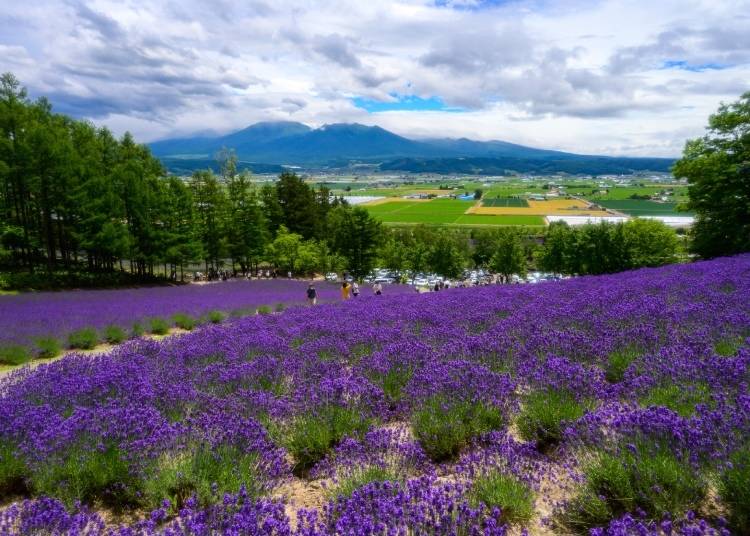
If you’re planning on visiting Hokkaido during the summer, chances are that you will have heard of Hokkaido’s vast flower meadows. These are dotted across the region from north to south and if you are visiting between the months of July to September, you’ve a good chance of seeing them at their peak.
Of course, most are drawn to Furano’s fabulous lavender. Commonly set on hilltops, you can get the contrast of a sea of purple against the dramatic Tokachi Volcanic Group, the spine that runs right along the middle of Hokkaido. There are of course a number of famous lavender fields to name, but there are some secret lavender meadows to be found, too, which can offer all the beauty of the popular fields but without the large number of tourists. Go for a drive and see what you can find!
Lavender steals the show, but it isn’t the only flower worth capturing in summer. Brightly-coloured lupines that dot the landscape of Kamifurano and Biei in June and sunflowers at Hokuryu in August are all worthy of a place in your photo album.
If you want to capture a dazzling landscape laden with flowers, then flower parks like Biei’s Shikisai-no-Oka offer hectare upon hectare of colourful, striped meadows stretching away into infinity. Coupled with the backdrop of Biei’s rolling hills and the smoking peak of Mt. Tokachi, it makes for quite a memorable photo, regardless of whether you’re a seasoned pro or an occasional Instagram user.
Biei’s Patchwork Hills
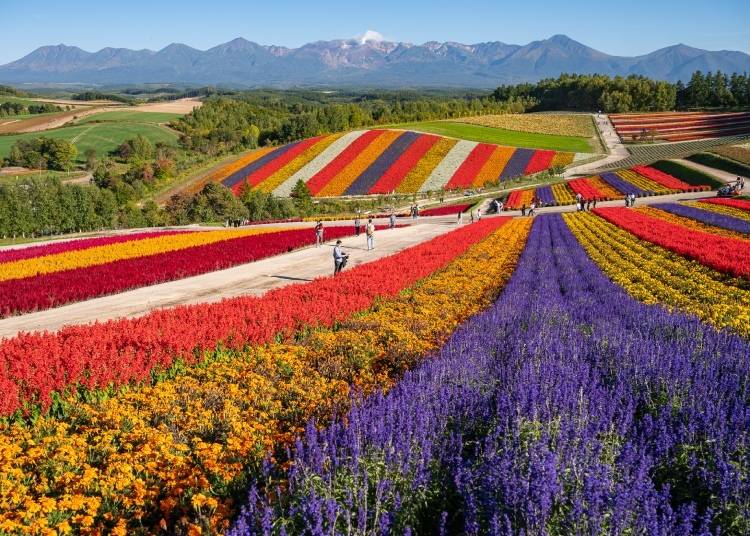
Biei has long been a draw for landscape photographers due to its seemingly endless vistas. With each time you visit, you are sure to discover a view that you didn’t find before.
This is in part due to the town’s “rotation farming” cultivation technique. Instead of planting the same crops in the same places year-on-year, different crops are planted in the same field in a rotation to guard against pests, disease and soil sickness. This technique creates a landscape of colourful squares that seems to change with every visit, giving rise to the nickname of “the patchwork hills”.
Although there are many famous viewpoints that make for a great photo– such as Shin’ei-no-Oka with its famous red-roofed hut and the many famous trees throughout the hills– the true beauty of Biei lies in exploring the hills for yourself and seeing what catches your eye on the horizon. If you can, try exploring bicycle to give you the freedom to stop whenever you like and take in the vast scenes before you.
The hills are at their peak in late July when the wheat turns a golden colour, but the scenery is just as spectacular in June, when snow longers on the mountains. In early August, hay bales dot the scene!
When visiting Biei, one point to keep in mind is that the fields, though beautiful, are private property. This includes dirt tracks within the field. Bacteria and parasites on the underside of your shoes can enter the soil and cause devastation to crops– sometimes over several generations of farmers. It is for the sake of their livelihoods that you must obey Biei’s tourism manners and keep out of the fields.
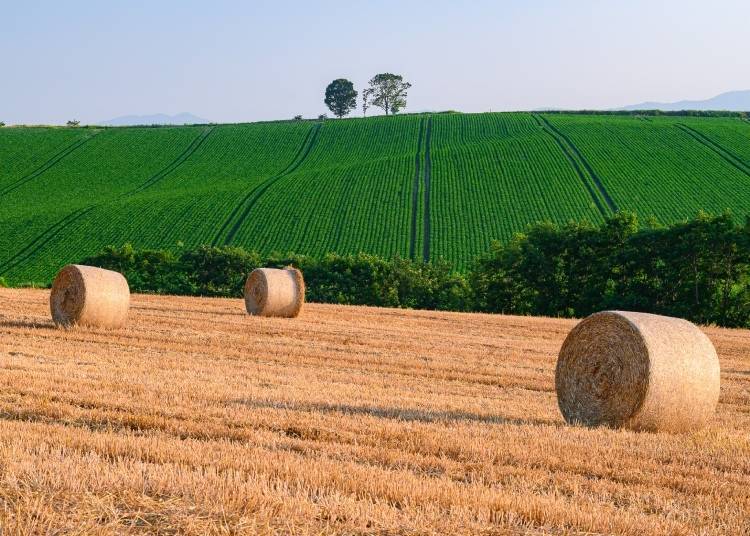
Seaside Vistas
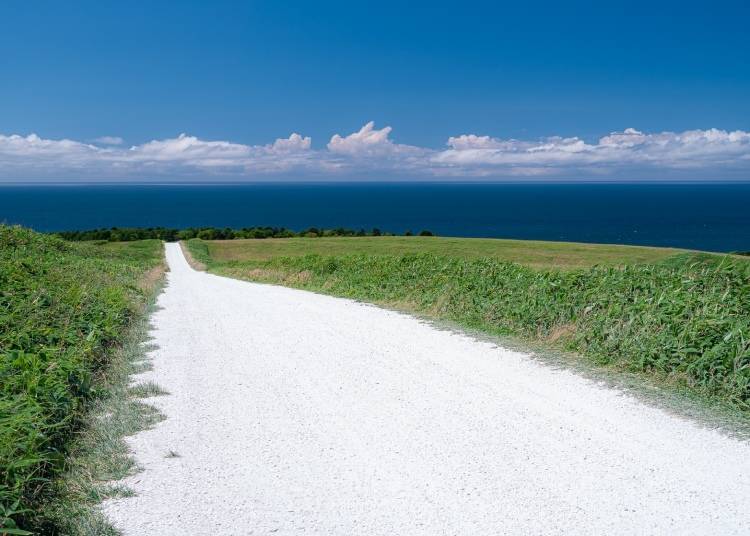
When you think of summer, you think of the ocean. As a northern land, Hokkaido’s oceans may have a frigid and steely image, but you will be pleasantly surprised to hear that from June to August, they burst with emerald and cerulean tones - picture-perfect!
The Shiretoko Peninsula is one such spectacular stretch of coastline. You can, of course, view it from above by climbing some of the wonderful walking routes in the region that allow you to take in the coastline from high above waterfalls. Or, you can take a cruise to view it from the ocean. The waterfalls look so much more dramatic this way! If you are lucky, you might also catch sight of some fabulous wildlife either on the shore or at sea.
The Shakotan Peninsula further west is also a wonderful summer sight. Places like Cape Kamui offer panoramic views where emerald green cliffs contrast against a sapphire blue sea. Colourful “Ezo-kanzo” orange lilies also dot the cliffs in midsummer, making the dramatic cliff-top views all the more beautiful!
Finally, Cape Soya in Wakkanai, Hokkaido’s northernmost city, offers some simply unforgettable coastal views. Take the Path of White Seashells, for example– a long road made from crushed seashells that seems to stretch on to the ocean itself. There are countless beautiful ocean vistas to find around the cape, and, on sunny days, you can see Rishiri Island in the distance too.
Hokkaido’s Top 3 Summer Wildlife Shots
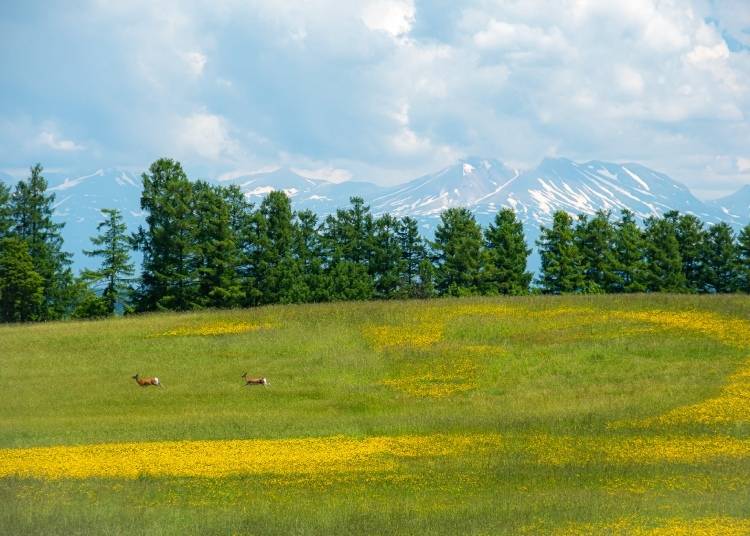
As well as being visually stunning, Hokkaido is also home to some incredibly diverse wildlife. Here are the top three animals you’ve got a good chance of seeing in summer!
If you wish to photograph Hokkaido’s wildlife, please remember that they are wild animals and not pets. They can behave unpredictably and may carry parasites and diseases that can spread to humans. Do not approach or touch wild animals and do not offer them food. If you are seen getting too close to animals or offering them food, you could be fined under Hokkaido’s wildlife protection laws.
As for kit, it goes without saying that you will need a zoom lens to photograph animals from a safe distance. You will want a zoom of at least 300mm for animals at mid-range, but 400mm - 600mm is ideal. It will allow you to photograph animals pretty clearly, even from far away. A tripod is sometimes more of a hindrance when photographing wildlife, but if it is slow-moving, then a tripod is a good idea to stabilise your bulky zoom lens!
If you are using a smartphone, I would recommend dropping the idea of taking photos as some smartphones do not have shutter speeds quick enough to keep up with the movement of animals. Some smartphones also have limited zoom before image quality is completely lost. Instead, switch to video mode! You’ll be able to capture the charms of Hokkaido’s animals far better with a smartphone video than a photograph.
Bears
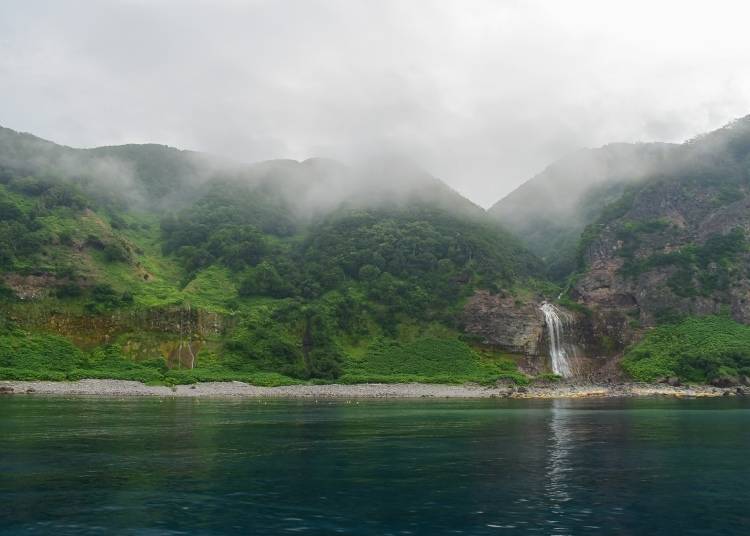
Sacred to the Ainu, Hokkaido’s indigenous people, brown bears have become a symbol of Hokkaido and they are very active in summer. Of course, it is important to keep your distance from such powerful animals, but you can still spot them from a boat off the Shiretoko Peninsula. Nature cruises will take you around the peninsula’s tip and back, giving you an opportunity to see the bears in their natural habitat, strolling the coastline. If you are lucky, there may even be baby bears in tow!
Bears are so common in Hokkaido that they regularly appear on mountain roads, in towns and villages and of course in the region’s many national parks. If you do plan on going wild in Hokkaido’s summer, make sure you educate yourself on etiquette and regulations in bear country, as well as what to do should you find yourself in close quarters with a bear.
Marine Wildlife
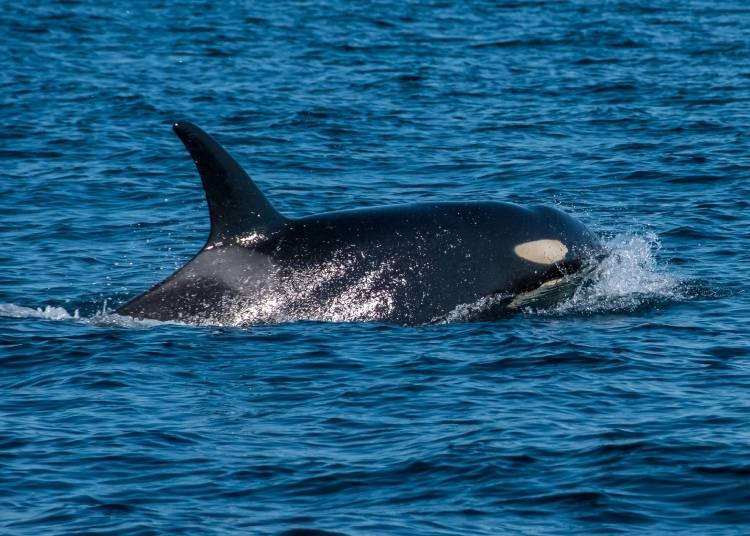
There is plenty of marine wildlife to find in the summer, both in the ocean and on the shore. Once again, the Shiretoko Peninsula takes the prize for this. Wildlife-watching cruises can take you out to sea in search of orcas and various species of whales and dolphins. If you’re lucky, you may have a close encounter with these playful and intelligent creatures, who sometimes come right up to the boats to take a good look at their visitors! These occurrences make for some incredible photo-ops and it is quite moving to see just how happy the creatures are in their vast ocean habitat.
At Cape Kiritappu and Cape Nosappu, you will find cute sea otters. These little fellows like to float around on their backs in the sunshine, gripping their seafood dinners– and sometimes their babies– against their fluffy tummies. There is nowhere else in Japan outside of zoos where you can see these creatures, so it is well worth putting them on your list of creatures to photograph!
Deer
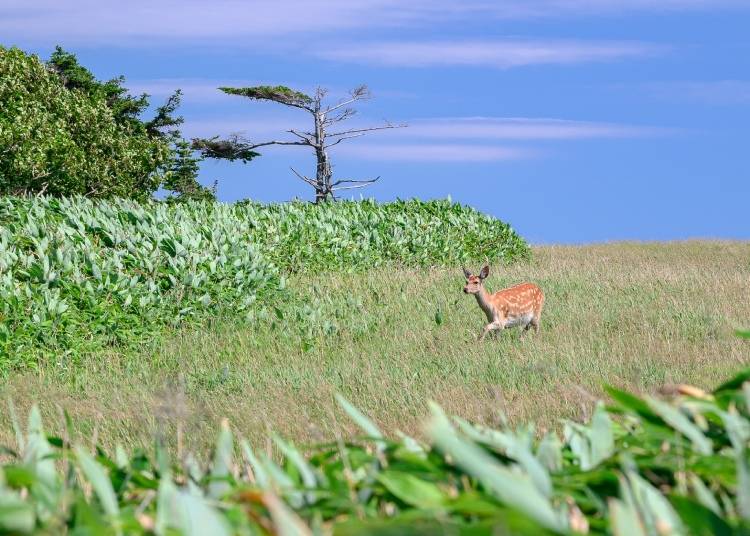
Deer are all over Hokkaido. In fact, they are so common that some say Hokkaido has more deer than humans! If there is any animal you are likely to get a good shot of in summer, it is almost certainly a deer.
You might imagine that deer are skittish creatures that flee as soon as anybody comes near. This is certainly the case in less-plentiful seasons, but with so much food to eat in the summer, Hokkaido’s deer are much more concerned with filling their bellies than running from danger. In winter, they might sprint away over the snow, but in summer, they will probably give you a lazy look as they continue chewing their juicy greens!
They are particularly concentrated around the Daisetsuzan National Park area, but you are very likely to spot them almost anywhere you go. Watch out for them on the roads, especially at night; sometimes, they can leap out of the forest without warning!
Finally: A Note on Drones
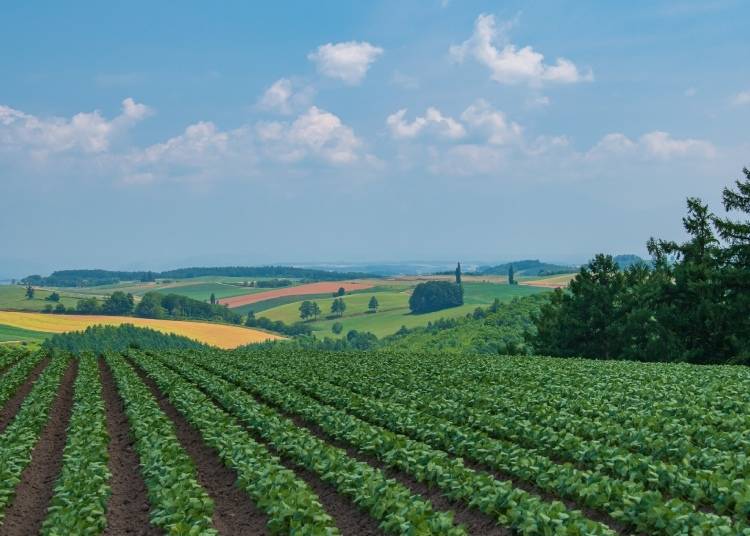
Drone photography has become popular in recent years, especially with the rise of social media and the unique opportunities it provides for photographers. And with how beautiful Hokkaido is, it’s only natural that you might want to capture some stunning aerial footage!
However, Japan has strict laws surrounding drones which may differ from your own country. As of June 2022, all drones must be registered with the Ministry of Land, Infrastructure, Transport and Tourism in advance of your visit. Fortunately, it is easy to do this by registering online via the Drone/UAS Information Platform System (DIPS). If you have not registered your drone, you will not be allowed to legally operate it in Japan and you could be fined or have your drone seized.
Once registered, it is still not as simple as flying your drone. This is because, by law, drones in Japan cannot be flown within 30 metres of private property without permission. And of course, all of those beautiful Hokkaido fields have an owner. In recent years, Hokkaido landowners have raised valid privacy concerns about aerial footage of their homes being splashed all over the internet without their consent.
As such, if you wish to fly your drone in Japan, you must take the following additional steps after registration.
- 1. Tell the MLITT all of your planned flights (“specified flights”) via DIPS. Tell the MLITT exactly where you plan to use the drone, the altitude you will fly at, the date, time and estimated duration of the flight. You must also explain the purpose of the flight and outline any safety measures you’ll take.
- 2. Stick to tourism attractions. Keep your flight plans restricted to tourism attractions. This will make obtaining permission from both the MLITT and from the landowner much easier. However, do not fly your drone in Hokkaido’s national parks. Legally, you also cannot fly your drone over crowded areas or large human gatherings such as theme parks, festivals etc.
Crowds can gather at popular tourist sites during the day, so for the best chance of approval, it may be best to fly your drone in the early morning when there won’t be many people around. - 3. Reach out to local tourism boards. Even if you have permission from the MLITT, local governments may have their own rules about operating drones. And of course, you need permission from the landowner of the tourism attractions in question. After getting permission and registering all of your planned flights, reach out to the local tourism boards overseeing your destinations. Show them your MLITT permission and planned routes, then ask if they can assist you with obtaining permission from the landowner, as well as asking if there are any other local rules you need to comply with before operating the drone.
- Please note that the above guide is basic travel advice and the laws around drones may change. As the drone operator, it is your responsibility to make sure you are up-to-date with the latest rules and regulations.
Don’t Miss Hokkaido’s Summer
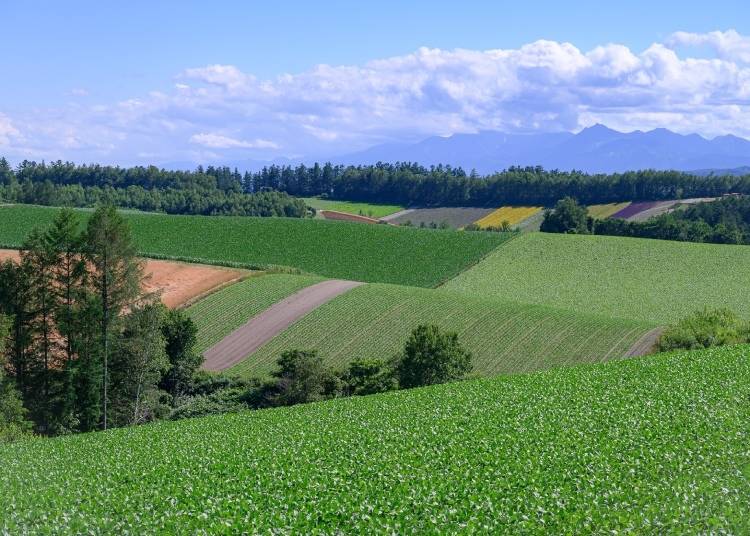
This is just the tip of the iceberg– there is a whole world of wonderful shots waiting for you in Hokkaido’s magical summer! Other wildlife you can expect to stumble across are red foxes and birds of prey like the magnificent white-tailed eagle. The Tokachi region and vistas of Lake Kussharo, Lake Mashu, and Lake Akan are also well worth dropping by for some memorable landscape photos.
The best thing to do is to keep your camera handy and go wherever Hokkaido’s wild winds take you. Like so many photographers visiting the region, you will surely find a little corner of this vast land that shines uniquely through your lens.
After spending ten years in the Japan inbound travel industry, Hattie is a writer also working to put together unique and exciting experiences for tourists in northern Hokkaido with her project Dohoku Local (https://www.dohoku-local.com/). You can also see where her photography adventures have taken her lately on Instagram.
- Area
- Category
*Prices and options mentioned are subject to change.
*Unless stated otherwise, all prices include tax.
Popular Tours & Activitiess
Recommended places for you
-
Appealing

Rukku and Uohei
Izakaya
Sapporo / Chitose
-
Appealing

Shirogane Blue Pond (Aoiike)
Rivers, Lakes & Canyons
Furano / Biei / Sounkyo
-

LakeAkan
Rivers, Lakes & Canyons
Abashiri
-
Appealing

Shiroi Koibito Park
Theme Parks
Sapporo / Chitose
-
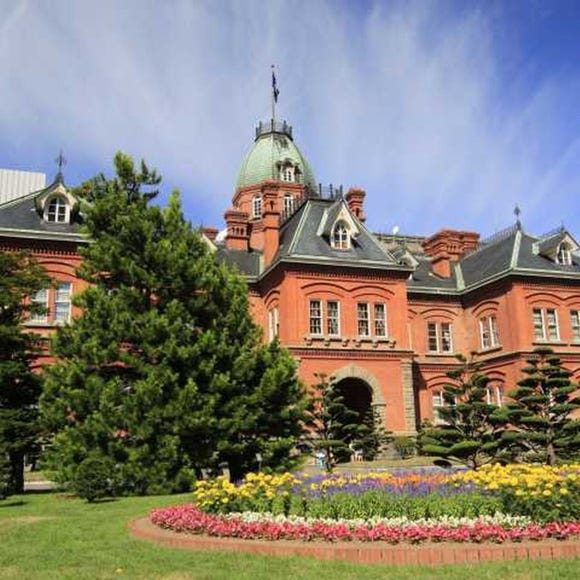
Former Hokkaido Government Office Building (Red Brick Office)
Other Historic Sites
Sapporo / Chitose
-
Appealing

Kanemori Red Brick Warehouse
Shopping Malls
Hakodate
-

The Ultimate Guide to Mitsui Outlet Parks in Japan (2025 Edition) - Popular Tax-Free Malls & Coupon Info for Travelers
by: Guest Contributor
-
Ad
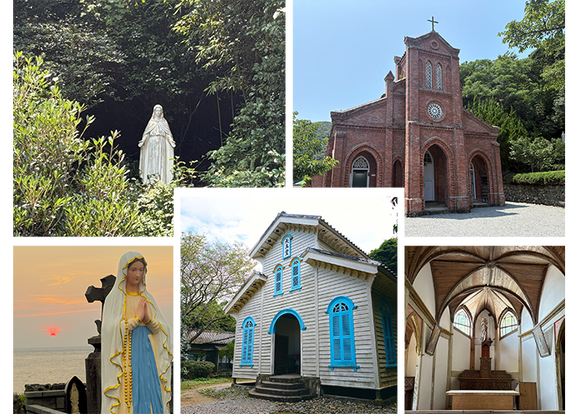
Unraveling the History of the Hidden Christians from Goto City, Nagasaki Prefecture, located in Kyushu
by: Yohei Kato
-

Fine Dining on Rails? Japan Announces Stunning NEW 'Laview' Restaurant Train
-

10 Must-Buy Cosmetics at Don Quijote (2025 Edition)
-
Ad

Get Your Perfect Custom Suit at GINZA Global Style PREMIUM Ginza Honten: Choose from 5,000 Fabrics, Starting at 26,400 Yen (incl. tax)!
-

(12% OFF KKday Coupon) Mt. Fuji Autumn Leaves, Powder Snow & More! 15 Best Tours to Experience Japan in Fall & Winter
-

Visiting Hokkaido in Summer: Ultimate Guide to Hokkaido Weather and What To Pack
-

Otaru Travel Guide: Inside Hokkaido's Leading Destination (Sightseeing, Food, and Shopping Tips)
-

Summer Fun in Hokkaido: Spectacular Landscapes, Dazzling Nights, Festivals & Essential Tips
-

Beat the Heat in Hokkaido: Top 5 Summer Adventures from Sapporo
by: Nobuka Kawashima
-

The Best of Japan: 11 Major Cities Every Traveler Should Visit
-

Asia's Longest Zipline! 'HANAZONO ZIP WORLD' Opens Summer 2022 in Hokkaido
by: Cassandra Lord
- #best sushi hokkaido
- #things to do hokkaido
- #best ramen sapporo
- #what to bring to japan
- #new years in tokyo
- #what to buy in ameyoko
- #japanese nail trends
- #what to do in odaiba
- #onsen tattoo friendly tokyo
- #daiso
- #best sweets otaru
- #japanese fashion culture
- #best nature furano
- #japanese convenience store snacks
- #best japanese soft drinks






















